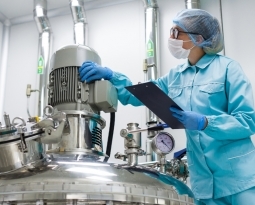Maryland Patent of the Month – September 2021
The most common problem surgeons face is the difficulty to access the surgical site. Oftentimes, patients are positioned in ways that put tension or pressure on the peripheral nervous system. If the patient is conscious, they could inform the surgeon of tingling, numbness, or weakness from their nervous system being pressed on. Of course, during surgery, the patient is usually under anesthesia and cannot tell the surgeon this. It might not seem like that big of a deal if pressure is on your leg, causing it to fall asleep but there are worse effects than that. Pressure on the peripheral nervous system can cause trauma if left too long. It can damage the nerves and result in an injury called a “positioning effect injury”. Even with careful positioning and monitoring, it is not always preventable.
SafeOp Surgical, Inc. has designed a method to detect nerve function, which means doctors will be able to detect any potential nerve issues even when the patient cannot say anything themselves. Their method allows for intraoperative neurophysiologic monitoring (IONM). Unlike traditional versions of IONM, SafeOp Surgical’s method is automated and significantly less expensive. Rather than requiring a highly trained technologist to set up and continuously monitor electrodes attached to the patient and the IONM instrument, this method uses an automated recording device.
It can detect the functionality of multiple nerves by detecting if they generate an acceptable electrical response upon stimulation. It’s done by a series of automated and time-locked electrical stimuli to an electrode positioned on the body. The results are recorded and used to generate an initial baseline of response. This is necessary since the response is different for every individual. Then, throughout the surgery, more electrical stimuli is sent and the results are compared to the baseline. Results are displayed on a device after being automatically calculated. This removes the need for constant monitoring by a technologist, and removes the chance of human error. Deviations can indicate if too much pressure is on the nervous system and tell the doctor’s to reposition the patient.
Are you developing new technology for an existing application? Did you know your development work could be eligible for the R&D Tax Credit and you can receive up to 14% back on your expenses? Even if your development isn’t successful your work may still qualify for R&D credits (i.e. you don’t need to have a patent to qualify). To find out more, please contact a Swanson Reed R&D Specialist today or check out our free online eligibility test.
Who We Are:
Swanson Reed is one of the U.S.’ largest Specialist R&D tax advisory firms. We manage all facets of the R&D tax credit program, from claim preparation and audit compliance to claim disputes.
Swanson Reed regularly hosts free webinars and provides free IRS CE and CPE credits for CPAs. For more information please visit us at www.swansonreed.com/webinars or contact your usual Swanson Reed representative.

















